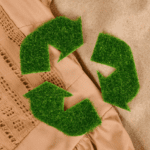The Chemicals Strategy for Sustainability EUR-Lex – 52020DC0667 was published by the European Union (EU) in 2020. It forms part of the expansive package of legislative measures under the European Green Deal and encompasses many product types, given the prevalence of chemicals throughout the consumer product industries.
Products ranging from toys, cosmetics, furniture, to textiles expose millions of consumers and workers to chemicals daily. It’s imperative to note the potential for harm these chemicals cause to people and the environment.
EUR-Lex – 52020DC0667 Strategy Objectives
The strategy outlines over 80 actions and advises indicative timing for their enactment into legislation and regulations. Actions included are discussed below.
High level roundtable on the chemicals strategy; The EU convened a roundtable of members from industries, Non Governmental Organisations (NGOs), international bodies, and the scientific community to fulfill the Strategy’s objectives.
Promotion of safe and sustainable chemicals by design; this framework emphasises innovation to replace harmful substances in products and processes. It also focuses on enhancing the safety and sustainability of chemicals in the market.
Chemicals and the circular economy: towards non-toxic material cycles; the EU’s shift to a circular economy faces challenges from harmful substances. The Commission is dedicated to addressing these ‘substances of concern’.
Strengthening the EU’s open strategy autonomy; as chemical manufacturing and supply chains grow more intricate, the EU aims to reinforce its strategy and diversify sustainable sourcing for essential chemicals.
Tackling the most harmful substances; the Strategy seeks to shield consumers and the environment from extremely harmful chemicals by revising legislations like REACH.
Definition of EUR-Lex – 52020DC0667 essential uses; criteria are being set to determine essential chemical uses based on health, safety, and societal necessities.
Endocrine disruptors; these chemicals require specific attention. The Commission plans to identify and restrict their use in consumer products. This is in-line with France’s AGEC law, which also raises concerns about their impact on babies, toddler’s and expectant mothers.
PFAS concerns; given the widespread use of Per- and Polyfluoroalkyl Substances (PFAS) and related contaminations, the Commission is proposing comprehensive actions due to the risk of serious illness caused by PFAS.
Chemical mixtures; the EU currently evaluates individual chemicals’ safety. There’s a push to include assessments for chemical mixtures.
One substance, one assessment; the ‘one substance, one assessment’ approach aims to streamline the safety evaluations of chemicals.
Zero-tolerance for non-compliance; the Strategy emphasizes stronger enforcement of EU chemical regulations.
Indicators; in collaboration with the European Chemicals Agency (ECHA) the European Economic Area (EEA), the European Commission (EU) is working on indicators to monitor and measure chemical pollution and legislation effectiveness.
Anticipated legal revisions
Following the publication of the Strategy, revisions are anticipated to the following pieces of legislation
- REACH
- Legislation on hazard classification, labelling, and packaging of chemicals (CLP)
- Rules on food contact materials
- Industrial Emissions Directive
- Sustainable product Initiative
How Eurofins can help
We offer a range of sustainable chemistry testing, inspection and certification services for consumer products and their supply chains.
Contact us now for more information or view our sustainable chemistry services.



